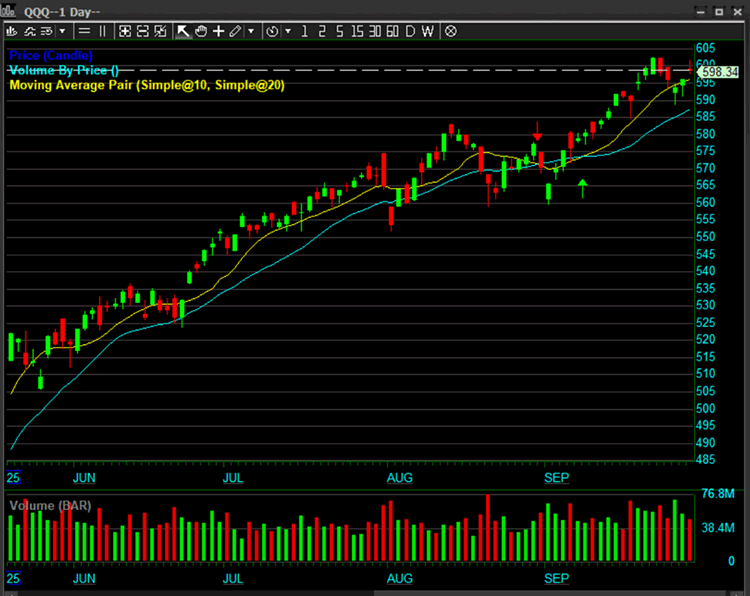U.S. stock markets finally got their long-awaited rate cut from the Federal Reserve, and as expected, they’ve pushed to new highs. With two more cuts likely before year-end, this isn’t surprising. There’s an old Wall Street saying: “Never fight the Fed.” When the Fed makes money cheaper, markets typically move higher as liquidity fuels growth.
Dot-Com Redux?
Still, valuations remain a sticking point. Many companies are trading at stretched levels, raising concerns of “irrational exuberance,” the phrase coined by Fed Chair Alan Greenspan in the mid-1990s during the Dot-Com bubble. The parallels between the internet boom and today’s AI-driven rally are hard to ignore—suggesting markets may have run too far, too fast.
The QQQ, the ETF for the NASDAQ 100 Index looks toppy, with a lower high and Doji Star near all time highs. The question on every traders mind is whether or not these valuations are sustainable.
The Current Wall of Worry:
Debt ceiling drama: Risk of a U.S. government shutdown remains.
- Geopolitical tensions: Wars in Ukraine and between Israel and Palestine persist, though markets seem largely desensitized.
- Corporate layoffs: Cuts continue, either due to slowing demand or efficiency gains from AI adoption.
- Tariff impact: Trump’s tariffs have yet to meaningfully add inflation pressure, but risks remain.
- Consumer strength: The rally has been fueled by consumer spending. Weak holiday sales could signal that households are finally tapped out—posing a threat to market momentum.
Strategy & Seasonality
While new highs are exciting, they’re also a prudent time to take profits. Historically, October through December is a bullish period, but with markets already up sharply, shifting to a more tactical, trading-focused approach makes sense. Locking in gains and keeping cash ready for opportunities may be the smarter play into year-end.
Bottom line: Enjoy the rally, but stay cautious—discipline now can protect profits later.
Written by Michael DiGioia, Director of Education
Mike is available for One-on-One Coaching. Learn More




